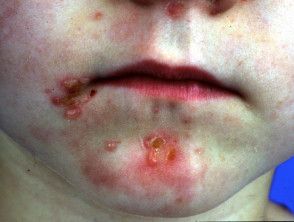- General Dermatology
- Eczema
- Alopecia
- Aesthetics
- Vitiligo
- COVID-19
- Actinic Keratosis
- Precision Medicine and Biologics
- Rare Disease
- Wound Care
- Rosacea
- Psoriasis
- Psoriatic Arthritis
- Atopic Dermatitis
- Melasma
- NP and PA
- Skin Cancer
- Hidradenitis Suppurativa
- Drug Watch
- Pigmentary Disorders
- Acne
- Pediatric Dermatology
- Practice Management
Review Explores Multifactorial Nature of Bone Health in Pediatric Patients With Epidermolysis Bullosa
Factors such as nutritional compromise, low levels of vitamin D, and more, negatively affect bone metabolism in this patient population.
Patients with epidermolysis bullosa (EB) experience an increased risk of osteoporosis, osteopenia, and pathologic fractures due to several factors, including nutritional compromise, low vitamin D levels, and more.
In addition to the cutaneous effects of EB, the relationship between Birmingham epidermolysis severity score and vitamin D status is associated with low bone mineral density (BMD) in children, according to a prior study.1
In this prior study,1 researchers also concluded that low areal BMD can also be considered a systemic complication of EB. Therefore, they noted the significance of a continuation of longitudinal evaluation of bone status in these patients.
A recent review2 published in Pediatric Dermatology explored the multifactorial nature of bone health in pediatric patients with EB, noting that numerous factors contribute to bone-related consequences in this patient population. Researchers sought to explore the prevalence of osteoporosis and osteopenia in this population, including the factors contributing to these effects, as well as to provide clinical recommendations for caring for patients with EB with bone health in mind.
An initial search of databases such as Embase, PubMed, CINAHL, and the Cochrane Database of Systematic Reviews took place and included data from database inception to April 11, 2022. A supplemental search was also completed on May 25, 2023. Relevant keywords utilized in the search related to EB in pediatric patients with bone density and bone health as factors.
In total, 1511 studies were imported for screening. Upon screening, 224 full-text abstracts were assessed for review eligibility, with 21 studies included in the review.
As a result of the review, researchers noted that children with recessive dystrophic EB (RDEB) and junctional EB (JEB) exhibited consistent reports of growth and pubertal delay. Pubertal delay was found in 7 out of 21 patients, with no gender preference. Body mass index scores were significantly lower in RDEB and JEB compared to other EB subtypes.
Additionally, studies indicated that 81% of papers were published in countries with low UV exposure (e.g., UK, Germany, US), while 19% were from countries with high UV exposure (e.g., Australia, Chile, India, Indonesia). Reduced UV light exposure was suggested as a potential factor impacting bone health.
Various studies assessed bone health using measurements like BMI Z-score, 25(OH)D levels, calcium, alkaline phosphatase, and more. RDEB consistently showed lower BMD Z-scores compared to other subtypes, indicating compromised bone mineral density.
Furthermore, disease severity was inversely correlated with BMD Z-scores across EB subtypes. Inflammatory markers like C-reactive protein and erythrocyte sedimentation rate were elevated in some cases. Low BMD was correlated with factors such as low albumin, delayed puberty, and malnutrition.
Studies reported consistently low BMD in RDEB, with slower bone mineral acquisition compared to healthy peers. Some patients presented with vertebral compression fractures, indicating bone fragility. Factors such as immobility, delayed puberty, and low BMI percentile were identified as predictors of low BMD. Positive correlations were found between BMD and factors like 25(OH)D levels, IGF-1, and BMI Z-scores.
"The evidence provided demonstrates the multifactorial nature of bone health in EB," study authors Kwon et al wrote. "Given the complexity affecting bone health and the impact of poor bone health on quality of life for children, there is a significant unmet need for mechanistic research of the molecular impact of EB on bone metabolism, as well as the development of guidelines for screening, monitoring, and treating osteoporosis in EB."
References
- Rodari G, Guez S, Manzoni F, et al. Birmingham epidermolysis severity score and vitamin D status are associated with low BMD in children with epidermolysis bullosa. Osteoporos Int. 2017; 28(4): 1385-1392. doi:10.1007/s00198-016-3883-1
- Kwon A, Hwang A, Miller CH, et al. Osteoporosis and bone health in pediatric patients with epidermolysis bullosa: A scoping review. Ped Dermatol. Published January 11, 2024. Accessed January 16, 2024. https://doi.org/10.1111/pde.15527

